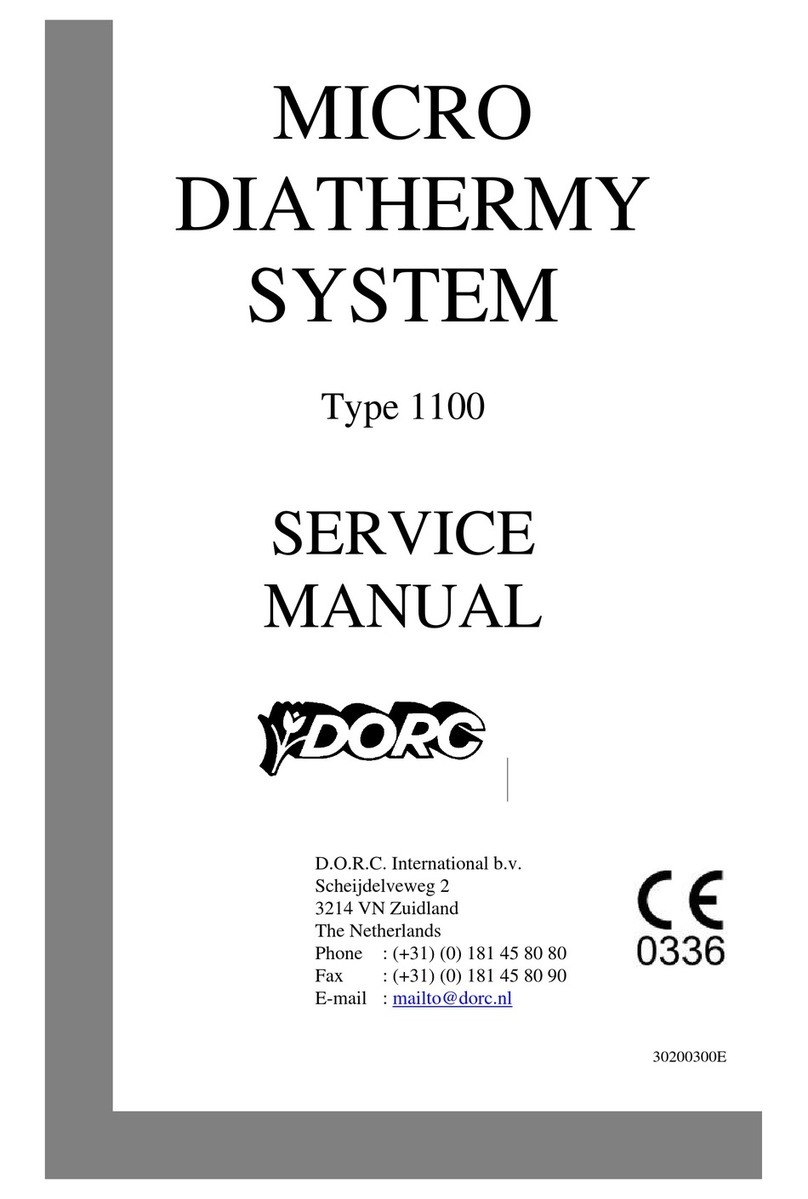
D.O.R.C. MICRO DIATHERMY SYSTEM
30300300C 8/16
Decontamination of Reusable Accessories
All reusable components must be thoroughly cleaned before resterilization. Sterilization should
then be performed using the instructions provided above.
Caution !!!
The effectiveness of sterilization methods other than those specified above is
unknown and should be validated by the user.
Caution !!!
The reliability of the sterilization process is affected by the number, type, and
inherent resistance of organisms on the items to be sterilized. Soil and moisture
inhibit sterilization and may produce toxic byproducts.
For additional general information regarding decontamination of surgical instruments, refer to
“AORN Recommended Practices for Care of Instruments, Scopes, and Powered Surgical
Instruments” (1997) and ANSI/AAMI ST35 (1996), “Safe Handling and Biological
Decontamination of Medical Devices in Health Care Facilities and Nonclinical Settings.”
Disassembly Instructions
Disassemble any device that has removable parts, and clean each part separately according to the
following instructions:
Cleaning Instructions
1. Submerge and soak the devices in the enzymatic detergent solution for a minimum
of two minutes.
Note: Items which cannot be submerged or soaked, should be wiped with
enzymatic cleaner prior to sterilization.
2. For devices with an internal lumen, flush enzymatic cleaner through the lumen
using a cleaning syringe.
3. Rinse under distilled running water to remove surface suspended particles.
4. Flush the lumen with distilled water.
5. Perform a final rinse with distilled water.
6. Dry the outside of the devices and purge the lumens with compressed air. Drying
may also be accomplished by rinsing or flushing with 70% alcohol.
7. Inspect the devices for cleanliness and damage. Call your local distributor for
replacements.
8. Reassemble any devices which have been disassembled prior to sterilization.
Note: The useful life of any surgical instrument depends on the conditions of use.
Therefore, there is no absolute recommended number of reuses. Components
should be discarded if there is any sign of wear or damage.
Re-sterilization Instructions
Re-sterilize the devices using the instructions provided in the section entitled “Sterilization (Prior to
First Use).” See page 6.
Caution !!!
Devices labelled as “Single Use” are designed to be used one time only, and should
not be reprocessed.




























